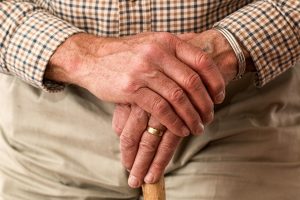What Is Osteoarthritis?
The term
osteoarthritis refers to a
musculoskeletal condition characterized by the degeneration of cartilage tissue, which gradually involves the entire joint environment (
tendons, ligaments, muscles, and bones), leading to
significant limitations in movement and varying degrees of pain.
The most commonly affected joints are the hip, knee, and hand (the latter particularly in women).
There are
four stages of severity depending on the degree of cartilage degeneration, ranging from the initial stage, where cartilage shows fraying and small cracks, to the fourth and final stage, where marked sclerosis and complete loss of cartilage tissue are observed, often with the formation of subchondral cysts.
How Is the Diagnosis Made?
Contrary to what one might think, imaging alone is not the first or only step in diagnosing osteoarthritis. A skilled clinician first evaluates the patient’s signs and symptoms: load-dependent pain, functional limitations, morning stiffness lasting less than 30 minutes, presence of crepitus, limited movement, and osteophytes (bone enlargement). It is also useful to assess whether the patient presents one or more of the following risk factors:
- age > 50 years, overweight (BMI > 25);
- previous joint injuries;
- jobs involving heavy physical loads;
- family history of osteoarthritis.
All of this information can guide the clinical hypothesis, which can then be confirmed with further diagnostic tests to assess the stage of disease progression.
Once Osteoarthritis Is Diagnosed, What Should Be Done?
Regardless of the starting point, the most effective approach is based on active exercise, weight management, and patient education about the condition.
Even in patients at stage four of osteoarthritis—when the joint shows the so-called
“bone on bone” condition with almost complete cartilage loss—it is recommended to start with a
personalized exercise program. Physical activity acts like a medication: it must be “prescribed” in the right dose.
International guidelines recommend both cardiovascular/aerobic training and weight-bearing exercises, whenever possible even with resistance training. But how? Isn’t there a risk of further joint damage? While it is true that cartilage cannot regenerate on its own, it is well established that weight-bearing exercise improves its function and structural quality (“lubricating” it through synovial fluid and enhancing its load-bearing capacity). For those interested, see the article: “Bricca A et al. Impact of exercise on articular cartilage in people at risk of, or with established, knee osteoarthritis: a systematic review of randomized controlled trials. Br J Sports Med 2019.”
Other Recommendations for Managing Osteoarthritis
The effects of strengthening programs are not immediate: exercises should be performed 2–3 times per week for 6 to 12 weeks before noticeable improvements in function and pain relief can be observed.
If combined with a hypocaloric diet to gradually reduce excess body weight, the results in terms of pain reduction and overall function are even more significant.
For individuals with very severe pain, under medical prescription, pharmacological treatment can be a useful tool to control pain and initiate rehabilitation.
Although widely used, paracetamol has shown little to no efficacy for osteoarthritis-related pain, whereas NSAIDs (Non-Steroidal Anti-Inflammatory Drugs), such as diclofenac, have proven more effective.
If conservative treatment fails or does not meet patient expectations, the final option is joint replacement surgery with endoprostheses. This involves replacing the damaged joint surfaces with artificial ones (usually made of metal or polyurethane), with 80–90% of patients reporting significant pain relief.
Conclusions
In conclusion, don’t be discouraged by your starting point. Rely on a healthcare professional who can guide you through this long but rewarding journey toward regaining your autonomy.


